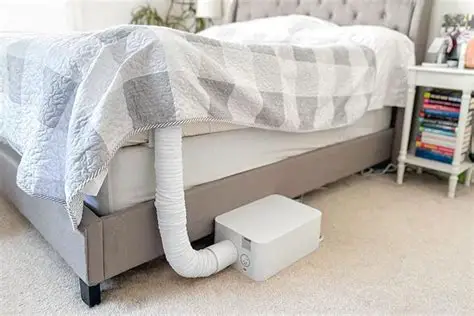The BedJet has emerged as a popular solution for those seeking to enhance their sleep comfort through temperature control. As sleep quality is crucial for overall health, many individuals are exploring whether this innovative device can genuinely make a difference. This article delves into the BedJet’s functionality, key features, user experiences, and comparisons with alternatives to help you determine if it’s worth the investment.
The BedJet is a climate control device designed for bedding that provides both heating and cooling capabilities. It operates by circulating air through a special sheet placed on your mattress. The unit can be controlled via a remote or a smartphone app, allowing users to adjust their sleeping environment according to personal preferences. This flexibility makes it particularly appealing for couples with differing temperature needs.
The BedJet works by drawing air from the room and either heating or cooling it before directing it into the bed through a patented nozzle system. The setup process is straightforward, typically involving the following steps:
- Position the BedJet unit near your bed, ideally within reach of a power outlet.
- Attach the air hose to the unit and thread it through the specially designed sheet.
- Plug in the unit and set your desired temperature using the remote or app.
This system allows for quick adjustments, ensuring you can achieve the optimal temperature for sleep without the need for bulky bedding or multiple layers.
Key Features and Specs
- Heating and Cooling: Provides temperature control from 66°F to 104°F.
- Dual-Zone Capability: Allows for individual temperature settings for each side of the bed.
- Remote Control: Comes with a wireless remote and smartphone app for easy adjustments.
- Quiet Operation: Designed to be quieter than traditional fans and heating systems.
- Energy Efficient: Consumes less energy compared to conventional heating and cooling systems.
The BedJet is particularly beneficial for:
- Couples with differing temperature preferences, as it allows for individualized settings.
- Individuals who experience night sweats or temperature fluctuations during sleep.
- People living in climates with extreme temperatures, providing a year-round solution.
However, it may not be ideal for those who prefer traditional bedding solutions or do not have temperature sensitivity. Additionally, individuals who sleep in very small spaces may find the unit cumbersome.
BedJet Pros and Cons
Pros
- Effective temperature control, enhancing sleep quality.
- Easy to set up and operate.
- Dual-zone feature for couples with different preferences.
- Energy-efficient compared to central air conditioning or heating.
- Quiet operation, minimizing disturbances during the night.
Cons
- Initial cost can be higher than traditional bedding options.
- Requires a power outlet, limiting placement options.
- Some users report issues with the air hose being cumbersome.
- May not provide adequate cooling for extremely hot climates.
- Dependence on electricity may be a drawback during power outages.
Real User Experiences and Reviews
User experiences with the BedJet are varied, reflecting both satisfaction and some concerns. Many users praise its effectiveness in regulating temperature, often noting improved sleep quality. Positive reviews frequently highlight:
- Enhanced comfort levels, particularly for couples.
- Quick temperature adjustments that can be made remotely.
Conversely, some users have expressed dissatisfaction, especially regarding:
- Initial setup challenges and the bulkiness of the unit.
- Concerns about the longevity of the product and its components.
BedJet vs. Other Cooling & Heating Solutions
When considering alternatives to the BedJet, several options exist. Below is a comparison of the BedJet with popular competitors:
- ChiliPad: A mattress pad that uses water for temperature control. It offers similar dual-zone capabilities but may require more maintenance.
- Eight Sleep: A smart mattress with built-in temperature control and sleep tracking features. Its cost is generally higher than the BedJet.
- Traditional Fans: While affordable and easy to use, they do not provide the same level of targeted temperature control.
- Heated Blankets: Useful for warmth but lack cooling capabilities and can be cumbersome for summer use.
The initial cost of the BedJet typically ranges from $399 to $599, depending on the model and features. Ongoing costs may include electricity usage, which is generally lower than traditional heating and cooling systems. Here’s a breakdown:
- Initial Price: $399 – $599
- Average Monthly Electricity Cost: Approximately $5 – $10, depending on usage.
- Value for Money: Many users report improved sleep quality, which can translate to better overall health and productivity.
Deciding whether the BedJet is worth the investment largely depends on your individual sleeping needs and preferences. If you often find yourself tossing and turning due to temperature fluctuations, the BedJet could significantly enhance your sleep quality. It is especially beneficial for couples with differing temperature preferences, providing a customizable solution.
However, if you are accustomed to traditional bedding or have limited space, you may want to consider other options. The price point is higher than conventional methods, but the potential benefits in sleep quality and comfort may justify the investment. Ultimately, evaluating your specific needs and preferences will guide you to the right choice for your sleep environment.
